The Top 10 Books That Feature a Love Triangle
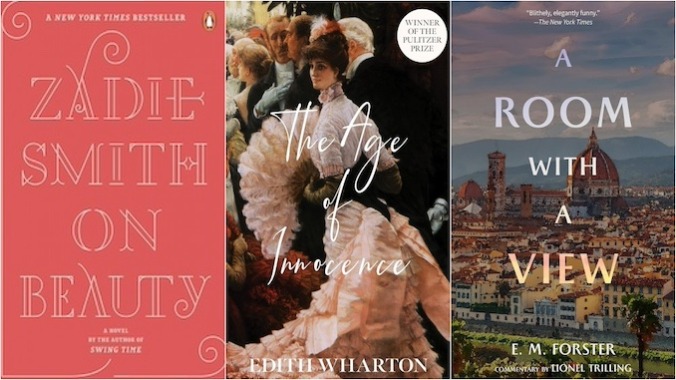
When the first trailer for Luca Guadagnino’s Challengers dropped it was instantly seared into the internet’s memory—and it’s been one of the buzziest movies of the year ever since. Audiences were hungry for stories that were provocative, self-aware, and sensitive to the slippery nature of attraction. All of this was promised in the shot of its 3 leads entangled on the bed, tipping on the precipice of some kind of illicit rendezvous. But love triangles are intrinsic to the history of art, rooted in the annals of classic literature. Everyone from Leo Tolstoy to Edith Wharton (not to mention the equally important output of Stephanie Meyer) has wielded the romantic triangle as a way of framing love’s shape-shifting form. At its best, the trope offers a more expansive understanding of relationships, one that doesn’t have a decided beginning or end but is caught in a series of interconnected starts and stops. At its worst, it is distracting, often grinding the plot to a halt. Oftentimes it is a bit of both.
Despite its name, the specific angles of the love triangle are not as important as the fact it forms a shape, wider and more complicated than the line between A and B. Indeed, these unwieldy romances often stretch past three people, enveloping and incriminating those on the fringes, reminding us that love grows; like people, like language, it is always somewhat outside of our control.
This list celebrates the best literature that features this trope.

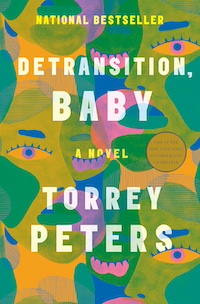
Detransition, Baby by Torrey Peters
Detransition, Baby’s love triangle is acutely nuanced, operating as an honest expression of hope. Together Reese, Ames, and Katrina are brought together grasping at different versions of a possible future. It is a startlingly confident writing debut for Torrey Peters, who embraces the wide breadth and complexity of love in its ugly transcendence.
But what I always remember when I think of this book is the author’s acknowledgments at the end. Peters expresses thanks for the strange commonality between divorced women and trans women. As she explains in an interview with NPR: both demographics “experienced a break in life, in which they had to reassess themselves, and they had to be honest about who they were and what they wanted…”
That is where Detransition, Baby lives, in the uneasy pain of change and reexamination and growth. The end is either a stuttering stop or a catapult to something new, depending on how the reader relates to all these ideas, regardless, these 3 people are tied together, with an uncommon thread pulling them tighter to each other and further forward.

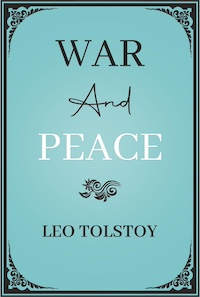
War and Peace by Leo Tolstoy
There are multiple love stories packed into this infamous epic. To plot out the many romances spanning across the book requires one of those police-style bulletin boards with twisting, red string, (and me, bug-eyed, and gesturing frantically). In short: Andrei falls for the young, impressionable Natasha, but after Andrei tragically dies in battle, Pierre admits to his lifelong love for Natasha and they end the story happily married. This is the rough measurements of their romantic geometry (with a few different characters forming extra corners in this shape) and it bleeds into every layer of the story, threaded through the alternating “war” and “peace” chapters. Andrei, Natasha, and Pierre’s love is uniquely reliant on all 3 parties, an amorphous organism expanding and shrinking as the years wear on. As such, it proved utterly unpredictable to me upon first read.
A love triangle like theirs requires the length and scope of Tolstoy’s epiwriting to build in the space necessary for maturation and change. Andrei and Natasha and Pierre and the characters who stumble into their setup are proof that nothing is set–that the notion of “romantic types” are compromised, indicative of the flimsy idea of how we want to be seen rather than who we are.

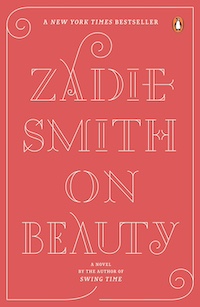
On Beauty by Zadie Smith
A markedly different take on the epic than Tolstoy’s more straightforward interpretation, On Beauty still spans two families and decades of attempting to navigate academic bureaucracy. Howard and his wife Kiki have a long, winding love story, upended by the arrival of their son’s ex (and Howard’s new student). It’s a strange and ugly progression, concerned with the blurring between love, age, and power.
Zadie Smith is an author whose observations of “cosmopolitan” life are sometimes plagued by a kind of forced apoliticism, one that hovers above her characters, refusing to take a side and assessing their lives from afar. At its best it captures life naturally, without restraint; at its worst, it feels removed from a wider context. On Beauty is her most overtly political story, a story of how race, class, and nationality compress and stretch love in unusual patterns. The true beauty of this story lies in its ending (one of Smith’s strongest attributes as an author is her willingness to careen, wholeheartedly, into an aggressive, inevitable conclusion). In On Beauty’s closing chapters, it’s obvious that nothing will be resolved, even with the various affairs sitting out in the open, fully disclosed. For Smith, love and knowledge don’t encourage commitment, instead, they sit opposite, taunting one another—and all of the readers caught in between.

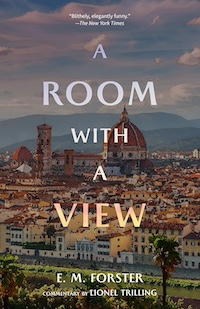
A Room with a View by E.M. Forster
One of the most enduring pieces of literature, E.M. Forster’s beloved story about the weird people you meet on holiday (kind of a joke, mostly true), also leaves a delicate, lasting legacy. Lucy is on the periphery of something new. She is young and still unsure about how to reform her own personhood to fit the confines of an inevitable marriage. When the novel replaces the sun-drenched hills of Italy for the greener pastures of the English countryside, it becomes a battle between expectation and desire: Cecil is the dependable aristocrat and George is the spark threatening to ignite her future. Obviously, this dichotomy has been retread countless times since, but it is Forster’s bouts of wisdom that elevate the trope.
Ultimately, marriage is only sustainable as a force that bens and flexes alongside its subjects, refusing to contain anyone involved. As George explains to her: “I want you to have your own thoughts even when I hold you in my arms.” Even with a pre-ordained outcome, there is a philosophical tension in the relationships at play, about what partnership can be. And as such, the conclusion feels lovingly earned and starkly modern.

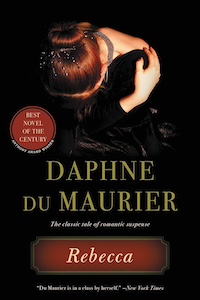
Rebecca by Daphne Du Maurier
You may see this and wonder: can this story really be considered a love triangle? With one-third of the parties involved dead? But Du Maurier fully commits to this concept, letting the tension of the story’s romance bleed into the novel’s Gothic tendencies. Both require a taut control of tension and atmosphere. In some ways, Du Maurier captures something true about all relationships, that the specter of old flames hangs over everyone, impossible to shake. She tinges this with bouts of her desperate, sexy melodrama.
Our anonymous protagonist is competing with Rebecca, her husband’s, long-dead wife, but she can barely grasp the details of Maxim’s (her husband’s) past life beneath his rage and secrecy. Instead what we see is someone struggling to stay afloat against the tides of someone else’s regret and guilt, battling to maintain a relationship that may never have existed. Our hero alternates between mimicking and rejecting Rebecca, and never striking a balance successful enough to woo her husband.

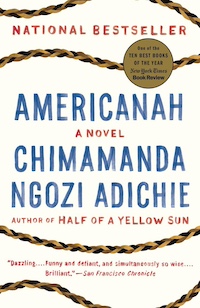
Americanah by Chimamanda Ngozie Adichie
At their best, love triangles offer simple ways for a predominantly young demographic to engage with fairly adult ideas around love. Sold as a single transmutable experience, love is actually something more complex, less whole. Every instance of love offers a new, markedly fresh sensation depending on the point in time and the person involved. Americanah plays with this idea, offering us two storylines that complement, contradict, and spread across the globe. Ifemelu and Obinze meet at school, as young and idealistic teens, eventually they meet again as adults in starkly different places with Obinze’s wife serving as a reminder of that difference.
What Adichie expresses through this story is that there are parts of us that remain locked to certain times and people. No matter the direction you move, there is an internal compass that directs people back to the moment romance was first incited.

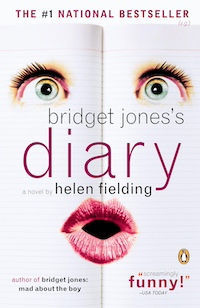
Bridget Jones’s Diary by Helen Fielding
Helen Fielding crafted an iconic story in Bridget Jones’s Diary, one that borrows its archetypes from a similarly iconic Pride and Prejudice, yet somehow still operates as a remnant of nineties culture. Bridget Jones is a news producer, flailing in her pursuit of a career and a relationship. She is also a victim of the aggressive beauty standards of the era, but this serves Fielding’s understanding of falling in love.
Daniel Cleaver and Mark Darcy offer different ways of distracting herself from her body, forcing her to communicate confidently with others, less and less aware of the space she takes up. It all culminates in a snowy, half-dressed declaration of love that feels silly and well-earned, an endearingly physical expression of trust.

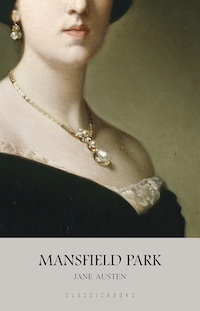
Mansfield Park by Jane Austen
Fanny Price is the most respectable of Jane Austen’s heroines; a protagonist free of ego and tortured by her instinct to do good. When reading Mansfield Park for the first time, I was reminded of that Instagram Q&A with Jemima Kirke. Normally her answers err on the (mostly) delightfully snarky side of things, but when someone asks her whether nice people are boring she responds with disarming sincerity: “Nice people are the best people. It’s not easy to be nice. They’re usually the ones who are most enduring of pain and they make other people feel comfortable and act nice too.” Centuries on, this serves as a pretty good summation of Fanny’s exhaustively sweet nature.
All of this could render the story inert were Austen a less skilled commentator, but she grapples Fanny’s goodness into a liveable shape. Her suitors—sweet, dumb Edmund and cruel, but also dumb Henry—embark on an emotional journey that will sculpt them into men worthy of Fanny’s selflessness.

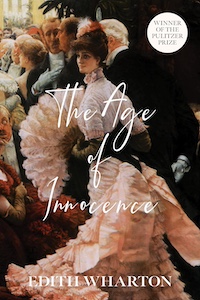
The Age of Innocence by Edith Wharton
Edith Wharton is the queen of unexpressed longing, letting it hang over every line of dialogue, charging the air characters breathe. Eventually, the hum of this desire morphs into its own score and with it, Wharton makes the acute pain of unrequited love its own kind of comfort. Nowhere is this more true than in her most famous novel: The Age of Innocence.
Newland, May and Ellen are locked in a tussle for love and ownership, with each woman falling on opposite ends of that spectrum. The Age of Innocence (and, I suppose, Rebecca, in a very different way) is the only book on the list to end on an overtly tragic note. Newland sees “his marriage [to May] becoming what most of the other marriages about him were: a dull association of material and social interests…” And with that, Wharton summarises the logical end to a couple’s storyline and forces them to be horrifyingly distant, perpetually an arm’s length away.

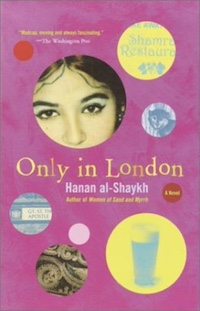
Only in London by Hanan al-Shaykh
This one verges into a cheat, as the third party of this love triangle only hangs on the fringes of things, acting as a cursory interruption to the main love story in a book crowded with plotlines. But Lamis’ ex-husband, and the son she left with him, complicate her new love for Nicholas—a suave and clueless English man. Lamis and Nicholas are the bedrock of a book that drops into an array of disparate characters, like a strange, postcolonial Love Actually. Amidst such a noisy, untrusting city, their love serves as a funny, self-aware reminder of the necessity for connection and the joy in that potential.
London-based film writer Anna McKibbin loves digging into classic film stars and movie musicals. Find her on Twitter to see what she is currently obsessed with.